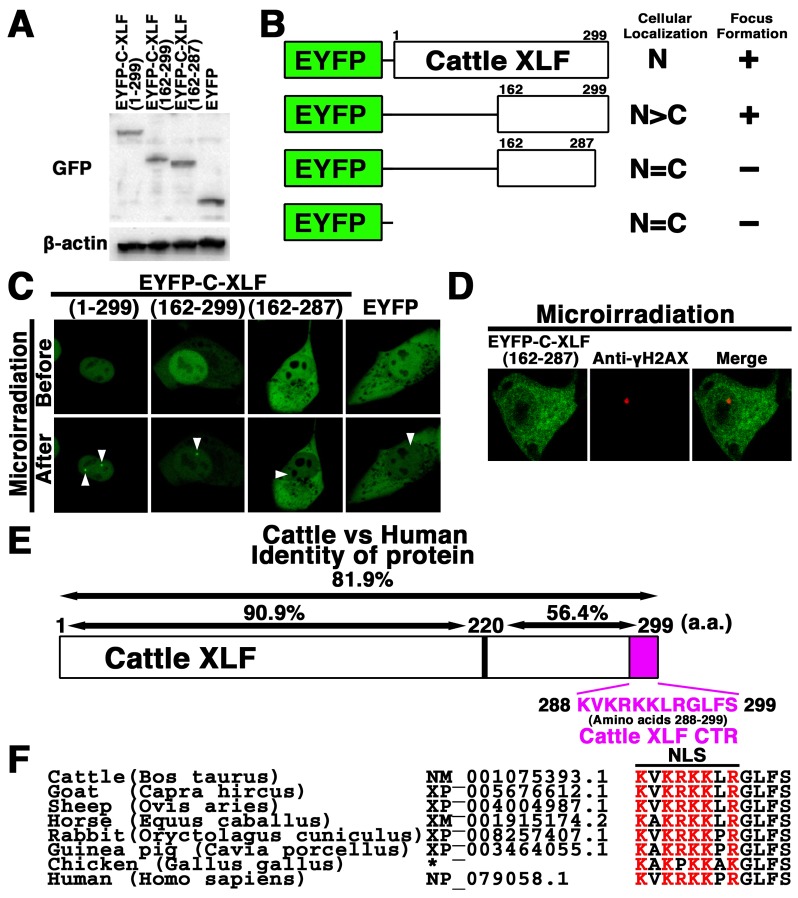Fig. 4.
The C-terminal region (CTR) is vital for the nuclear localization and recruitment of cattle XLF to DSBs in vivo. (A) Extracts from cattle (MDBK) cells transiently expressing the indicated cattle XLF deletions were prepared and subjected to Western blotting using the anti-GFP or anti-β-actin antibody. (B, C) Identification of essential domain of cattle XLF for nuclear localization and for accumulation at DSBs. EYFP-cattle XLF mutants were expressed in cattle (MDBK) cells. The localization and accumulation of the chimeric proteins at laser-induced DSBs were investigated via live cell imaging. The results are summarized on the right: Cellular localization (N, nucleus; C, cytoplasm) and formation of focus (+, accumulated at microirradiated sites; -, not accumulated at microirradiated sites). Arrowheads indicate the microirradiated sites (C). (D) Immunostaining of microirradiated EYFP-cattle XLF (162–287)-transfected cells with anti-γH2AX antibody. The cells were fixed and stained with the anti-γH2AX antibody at 5 min postirradiation. Left panel, EYFP-cattle XLF (162-287); center panel, γH2AX image; right panel, merged image. (E) Identity between the cattle XLF and human XLF at the amino acid level and the CTR of cattle XLF (amino acids 288–299). (F) The alignment of the primary sequence among homologous XLF proteins. For comparison, the basic (red) or non-basic residues (black) are shown in different colors. The GeneBank accession number for each sequence is mentioned. *, The sequence of CTR of chicken XLF is from Reference [1].

